ID-DOC: general search
Here you can enter a general keyword and perform a general search.
??? What are these question marks doing here? These represent tools which we know by a Dutch or French name, but who's English name is yet unknown. Suggestions are always welcome!
If you cannot find a certain tool, or if you experience other problems with this page, please let us know at info@mot.be.
Search for: tool
Showing search results 901 - 950
1,492 results found
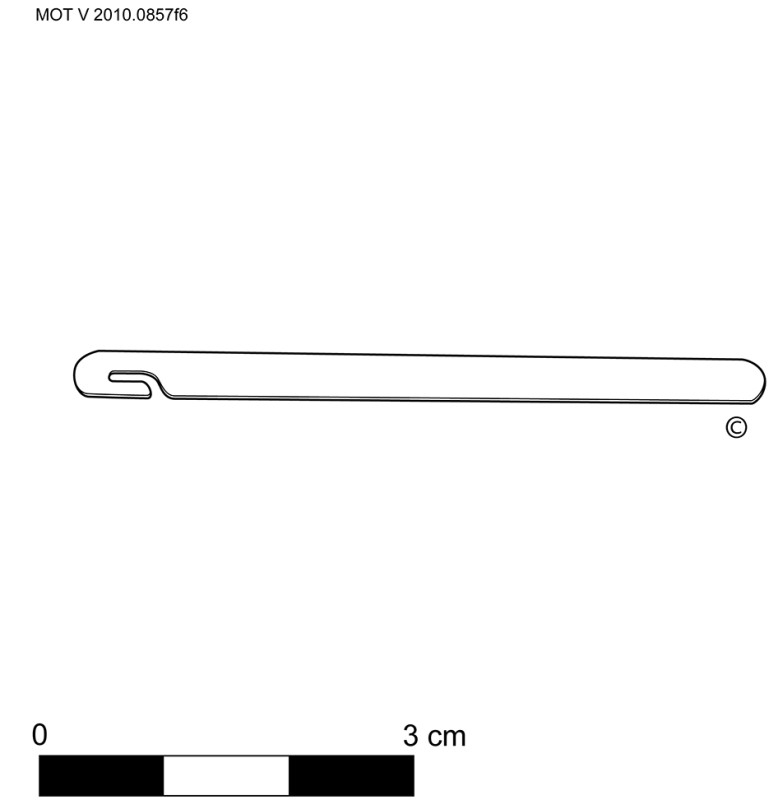
Needle threader
This text can only be consulted in Dutch
<https://www.mot.be/resource/Tool/needle-threader?lang=nl>
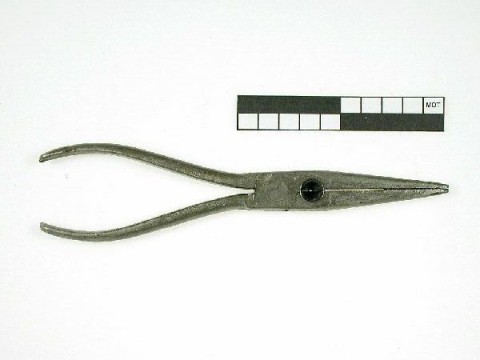
Needle-nose pliers
This text can only be consulted in Dutch
<https://www.mot.be/resource/Tool/needle-nose-pliers?lang=nl>
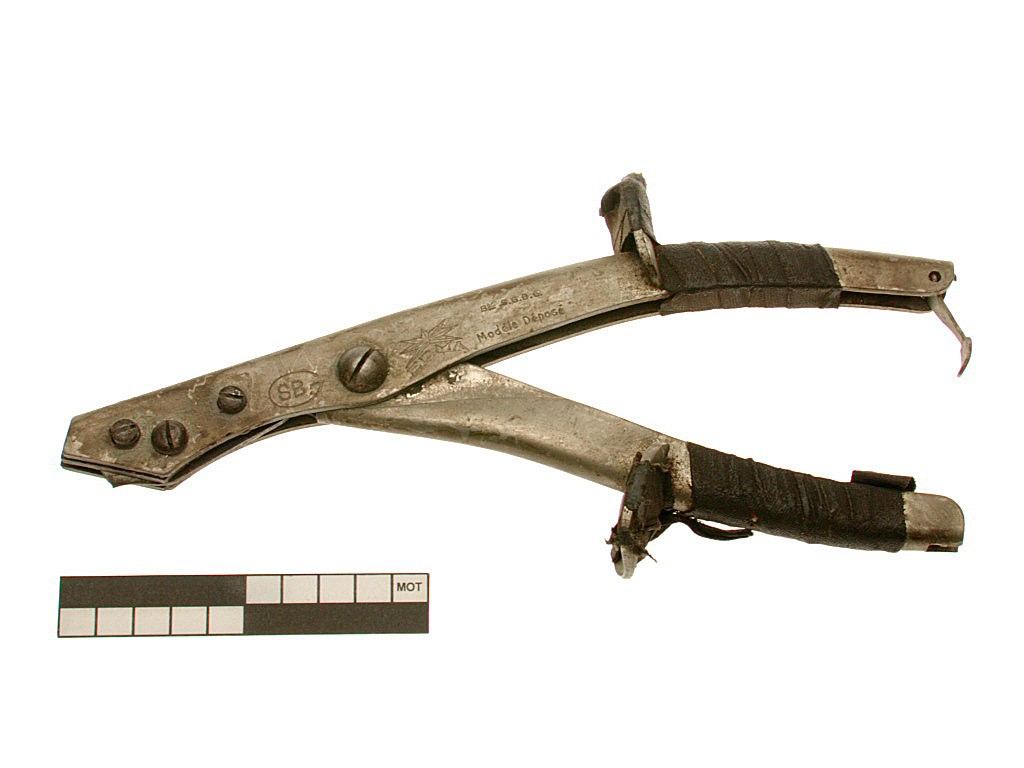
Nibbler shears
This text can only be consulted in Dutch
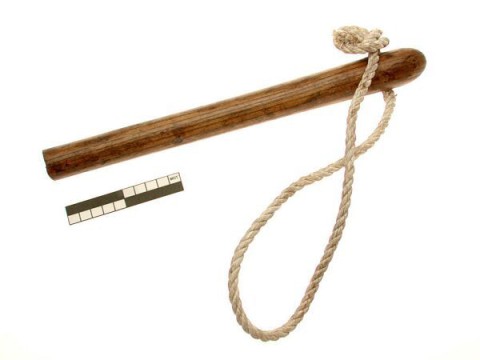
Nose twitch
The nose twitch consists of a wooden stick - sometimes made of plastic - of
about 50 cm with a hole at one end through which a loop of rope
(exceptionally a chain) protrudes. The tool is used as a means of coercion
to divert the attention of a horse during disturbing (eg eye care) or
painful procedures and to induce a calming and sedative effect (cf. humane
twitch). With the left hand, the loop is brought over the upper lip of the
animal, with the right, the loop is tightened. The same implement is used
on cattle, but on an ear (1). [MOT] (1) BERTHELON: 13.
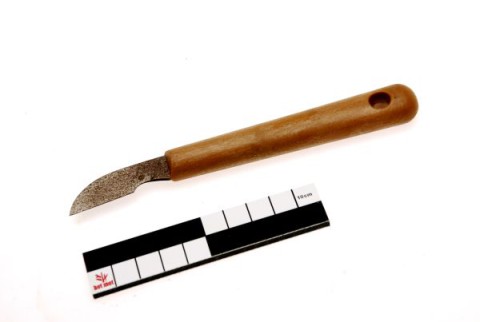
Notching knife
Notching knife of a wood engraver.
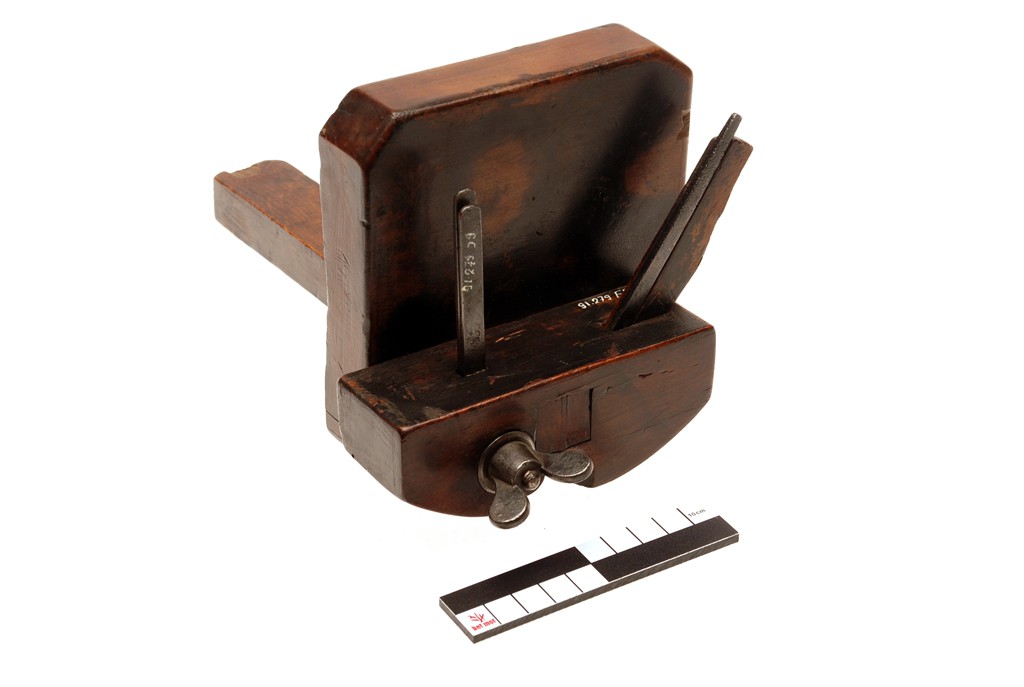
Notching plane
This text can only be consulted in Dutch
<https://www.mot.be/resource/Tool/notching-plane?lang=nl>
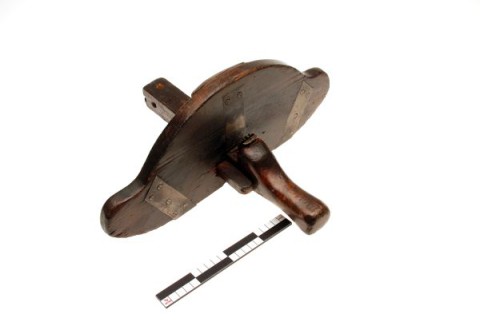
Notching saw
This text can only be consulted in Dutch
<https://www.mot.be/resource/Tool/notching-saw?lang=nl>
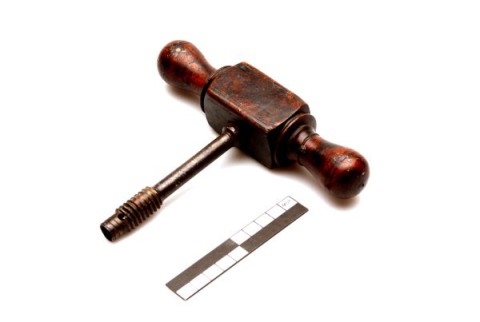
Nut bore
This text can only be consulted in Dutch
<https://www.mot.be/resource/Tool/nut-bore?lang=nl>
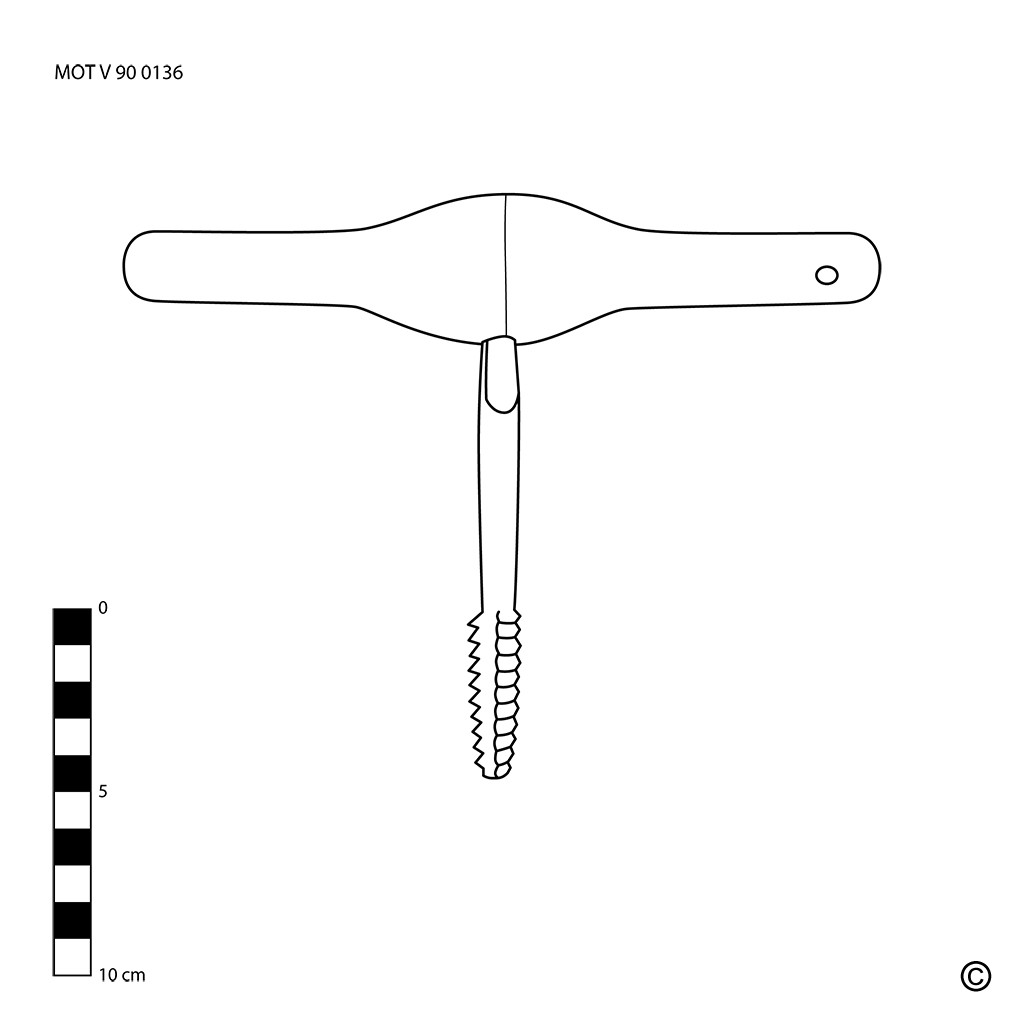
Nut bore (metal)
This text can only be consulted in Dutch
<https://www.mot.be/resource/Tool/96?lang=nl>
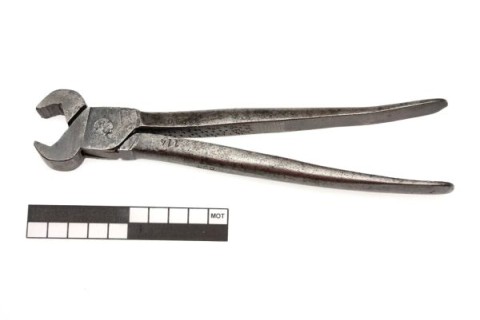
Nut pliers
Nuts can be tightened or loosened with nut pliers. The jaws are adapted to
the shape of the nut. They grab the nut on four of the six faces. Unlike
wrenches, the jaws don't move parallel. Sometimes they are ribbed on the
inside for a better grip and the opening can be fixed with a set screw. The
pliers cannot then be closed further than the screw allows, so that
excessive pressure cannot be exerted on the side surfaces of the nut and
thereby damage them. See also combination pliers. [MOT]
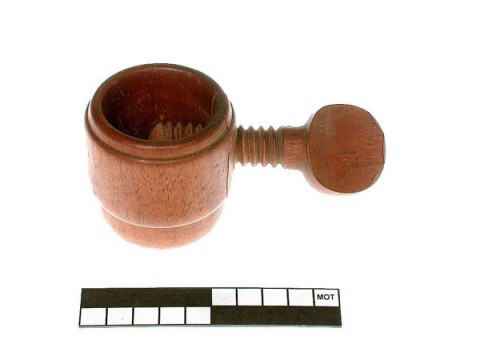
Nutcracker
This text can only be consulted in Dutch
<https://www.mot.be/resource/Tool/nutcracker?lang=nl>
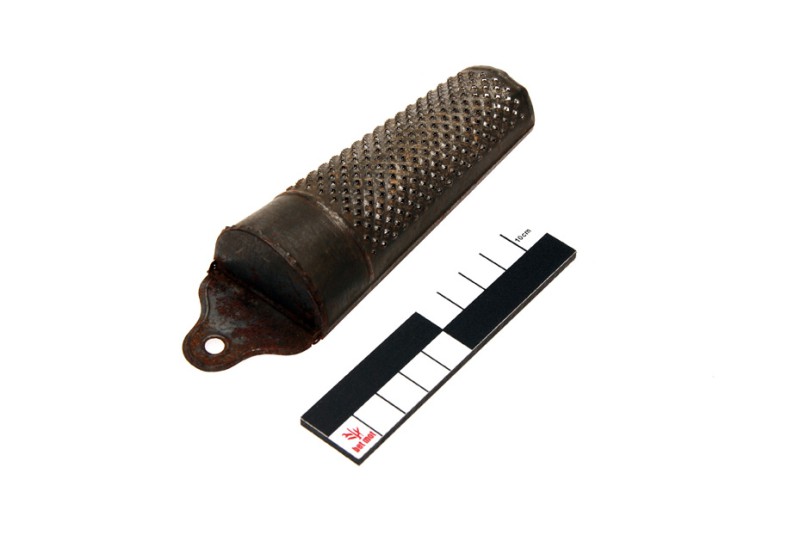
Nutmeg grater
Usually semicircular, but also sometimes completely round elongated metal
grater of sheet iron with which nutmegs can be finely grated. These graters
have a separate place where the nuts can be stored, usually at the top and
closed with a lid. The grater can also be placed in a container in which
both the nuts can be stored and in which the finely grated nutmeg can be
collected. See also nutmeg mill. [MOT]
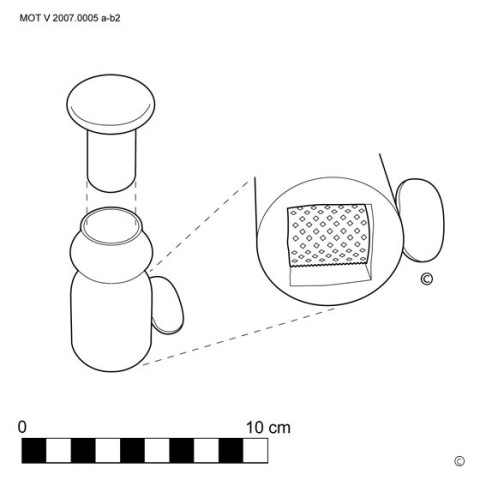
Nutmeg mill
This text can only be consulted in Dutch
<https://www.mot.be/resource/Tool/127?lang=nl>
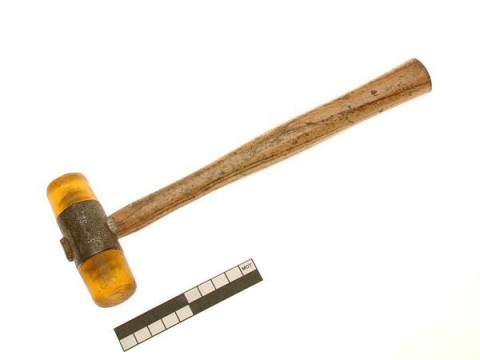
Nylon face hammer
This text can only be consulted in Dutch
<https://www.mot.be/resource/Tool/nylon-face-hammer?lang=nl>
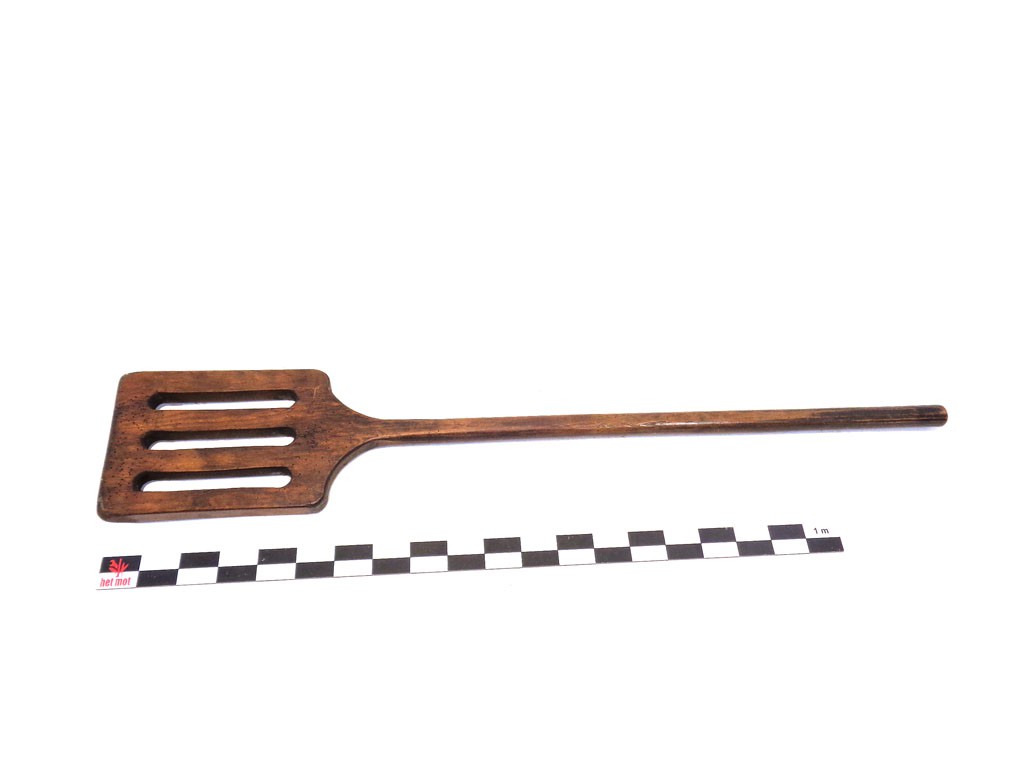
Oar
This text can only be consulted in Dutch
<https://www.mot.be/resource/Tool/oar?lang=nl>
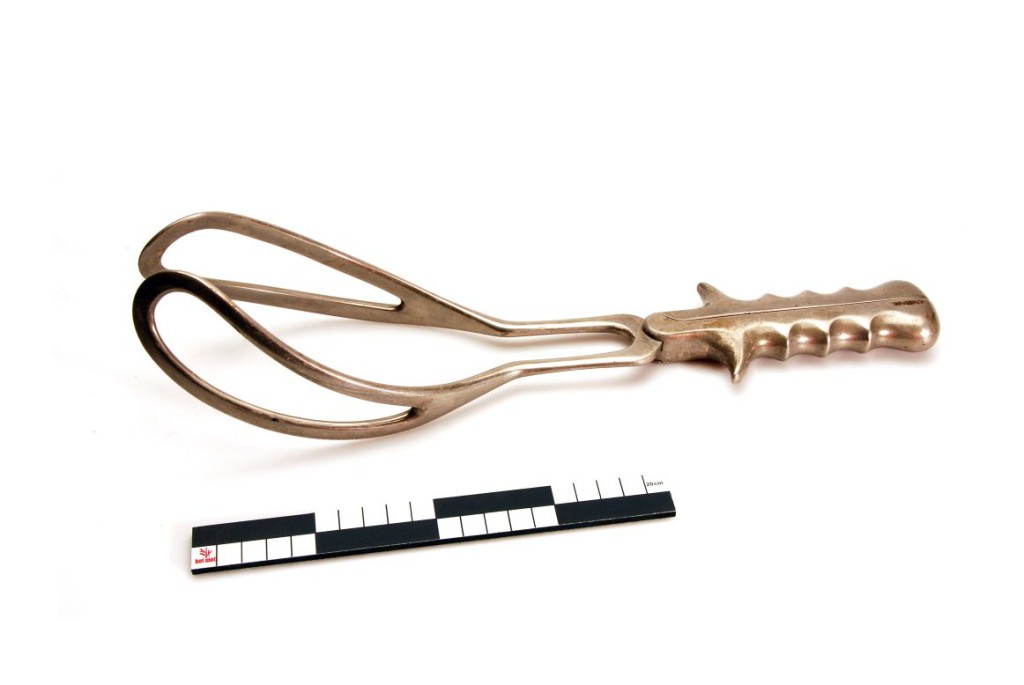
Obstetric forceps
These forceps were sometimes used during childbirth to retrieve a child.
Characteristic are the stainless steel, the wide jaws and the short arms.
After all, it was not allowed to exert great force on the head. The arms of
many forceps were connected without a pivot so that they could easily be
taken apart. The physician could then safely push one part of the forceps
to the left and the other to the right of the child's head. [MOT]
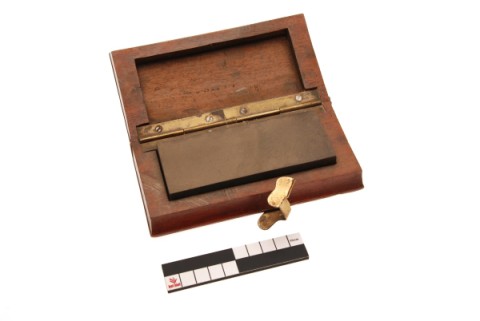
Oilstone/Waterstone
This text can only be consulted in Dutch
<https://www.mot.be/resource/Tool/oilstonewaterstone?lang=nl>
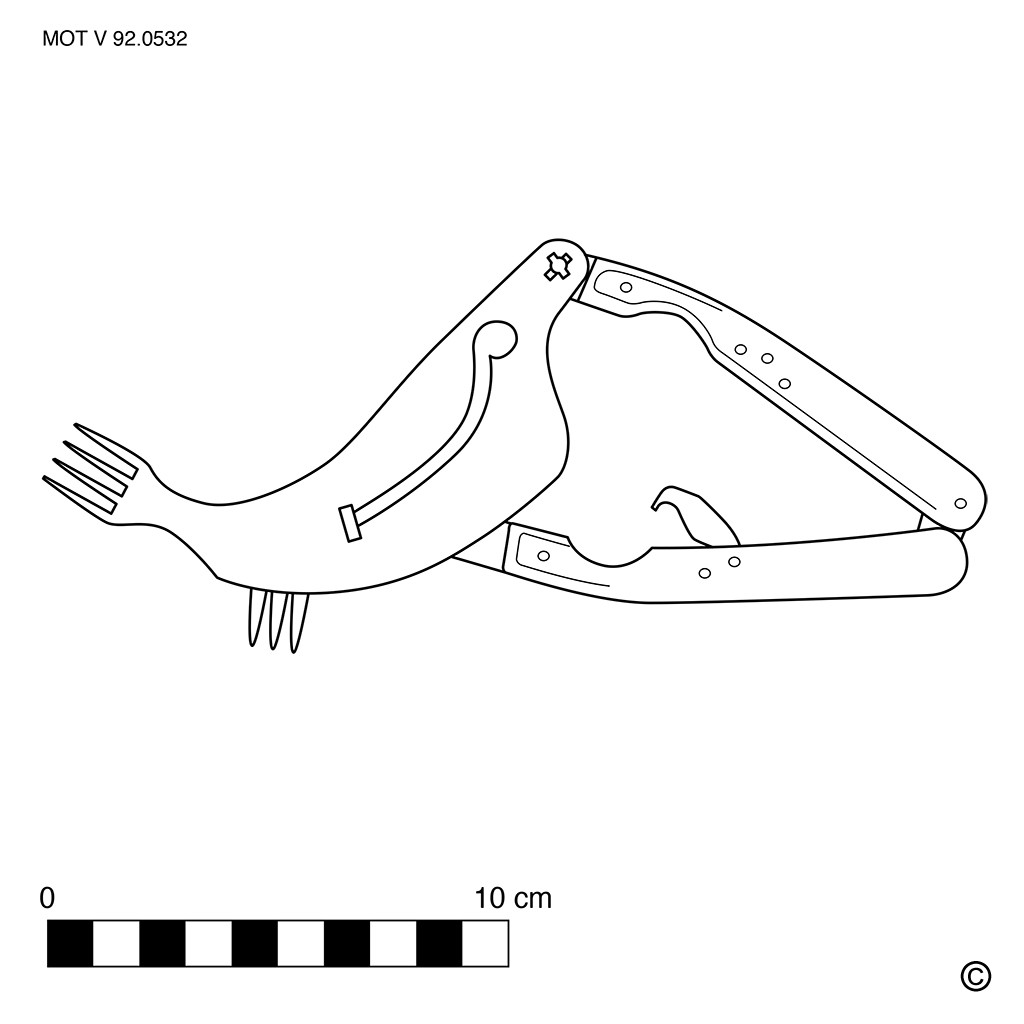
One arm man knife
The text on the one arm man knife (1) can only be consulted in Dutch. [MOT]
(1) BARLOW: 159.
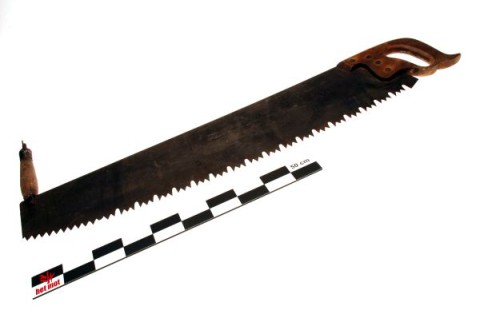
One-man cross-cut saw
This text can only be consulted in Dutch
<https://www.mot.be/resource/Tool/one-man-cross-cut-saw?lang=nl>
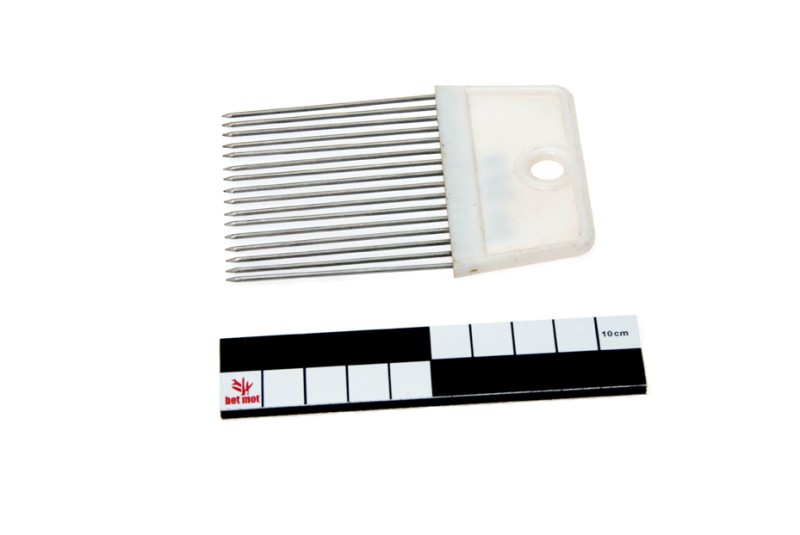
Onion fork
This text can only be consulted in Dutch
<https://www.mot.be/resource/Tool/onion-fork?lang=nl>
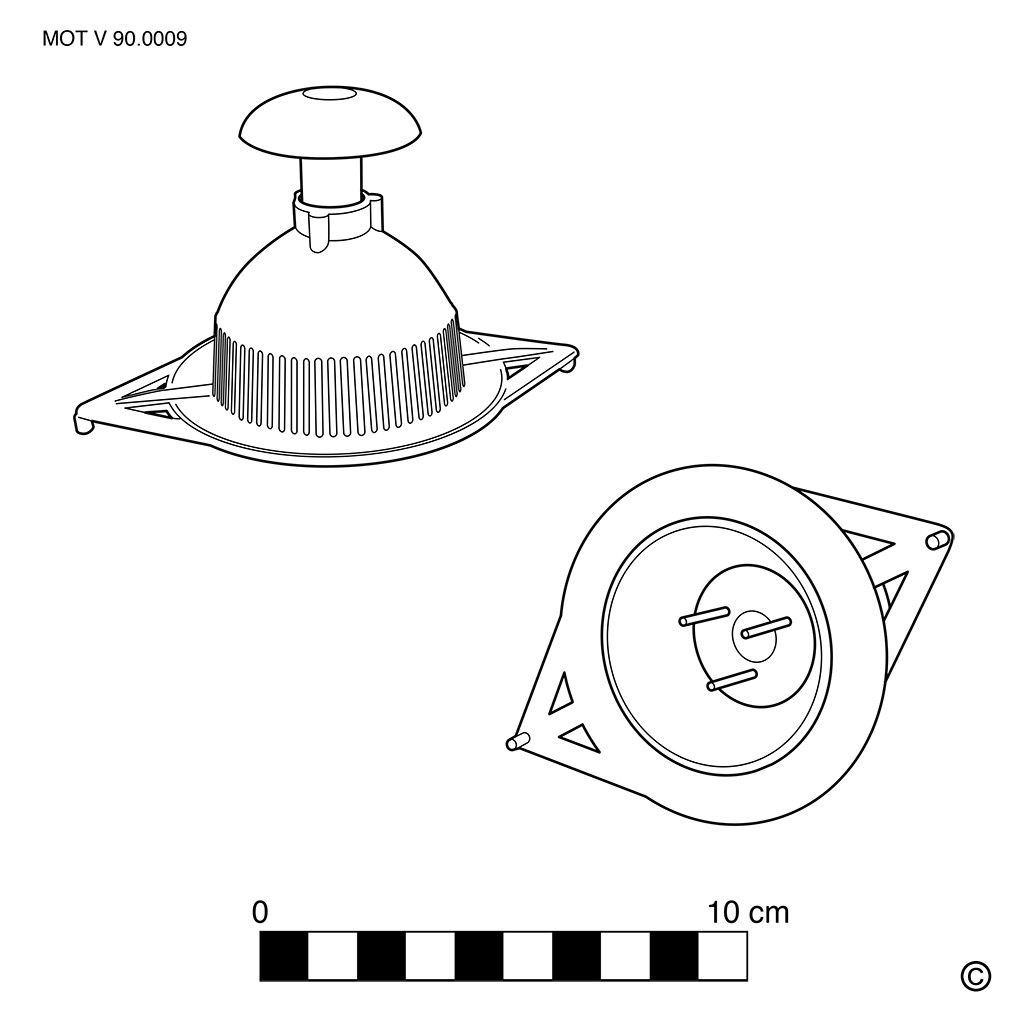
Onion handle
This text can only be consulted in Dutch
<https://www.mot.be/resource/Tool/onion-handle?lang=nl>
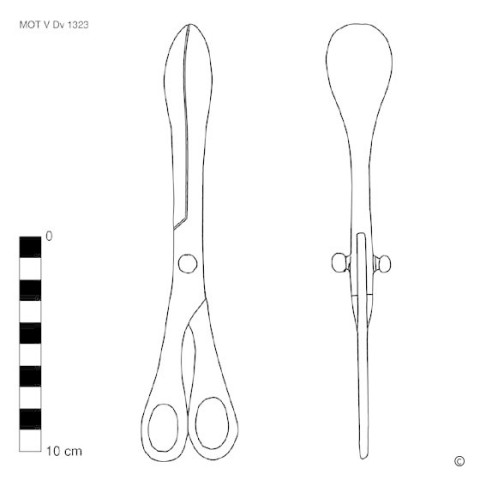
Onion tongs
This text can only be consulted in Dutch
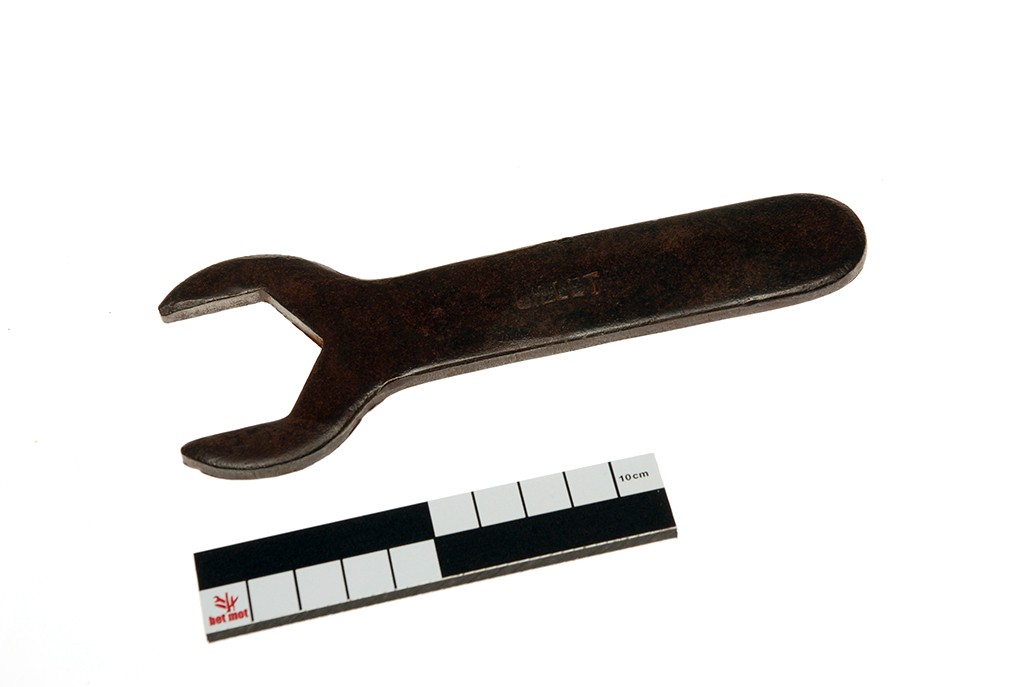
Open-ended spanner
This text can only be consulted in Dutch
<https://www.mot.be/resource/Tool/open-ended-spanner?lang=nl>
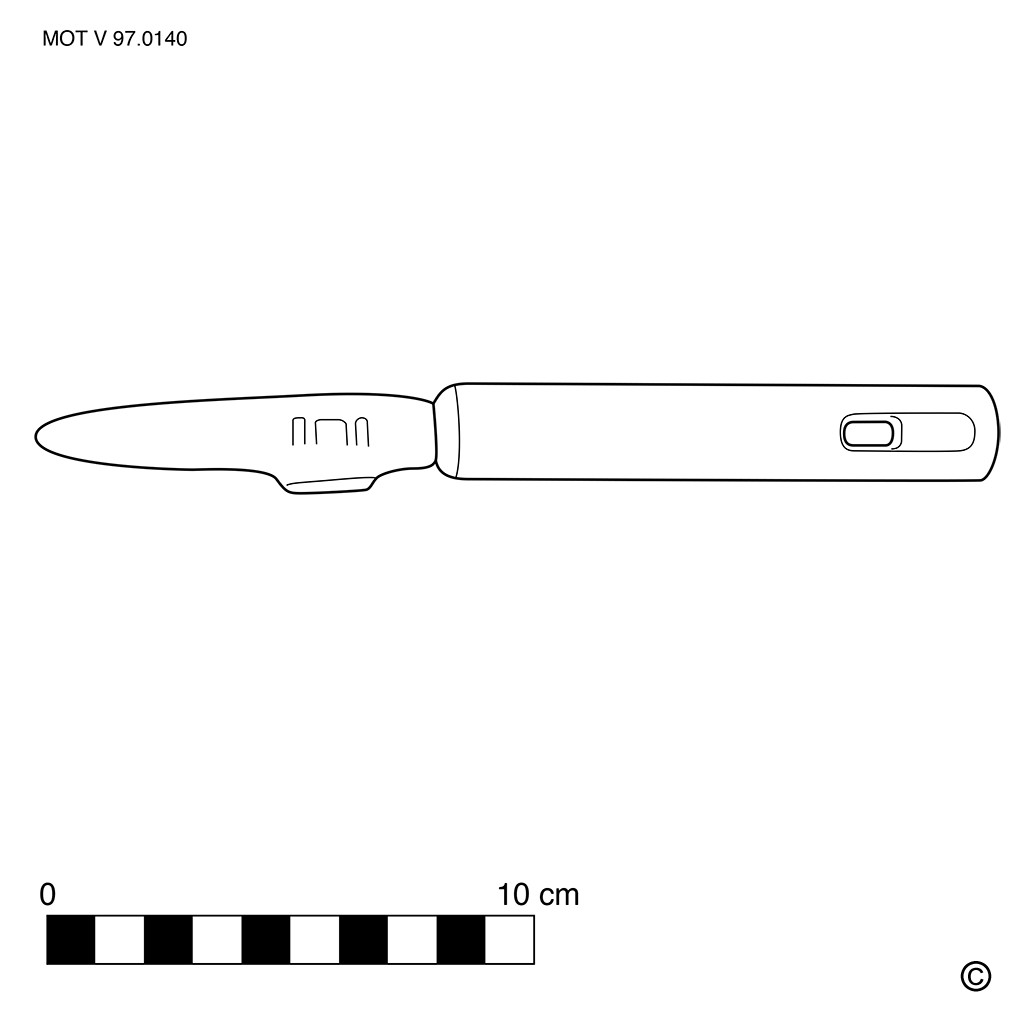
Orange peeler
This text can only be consulted in Dutch
<https://www.mot.be/resource/Tool/orange-peeler?lang=nl>
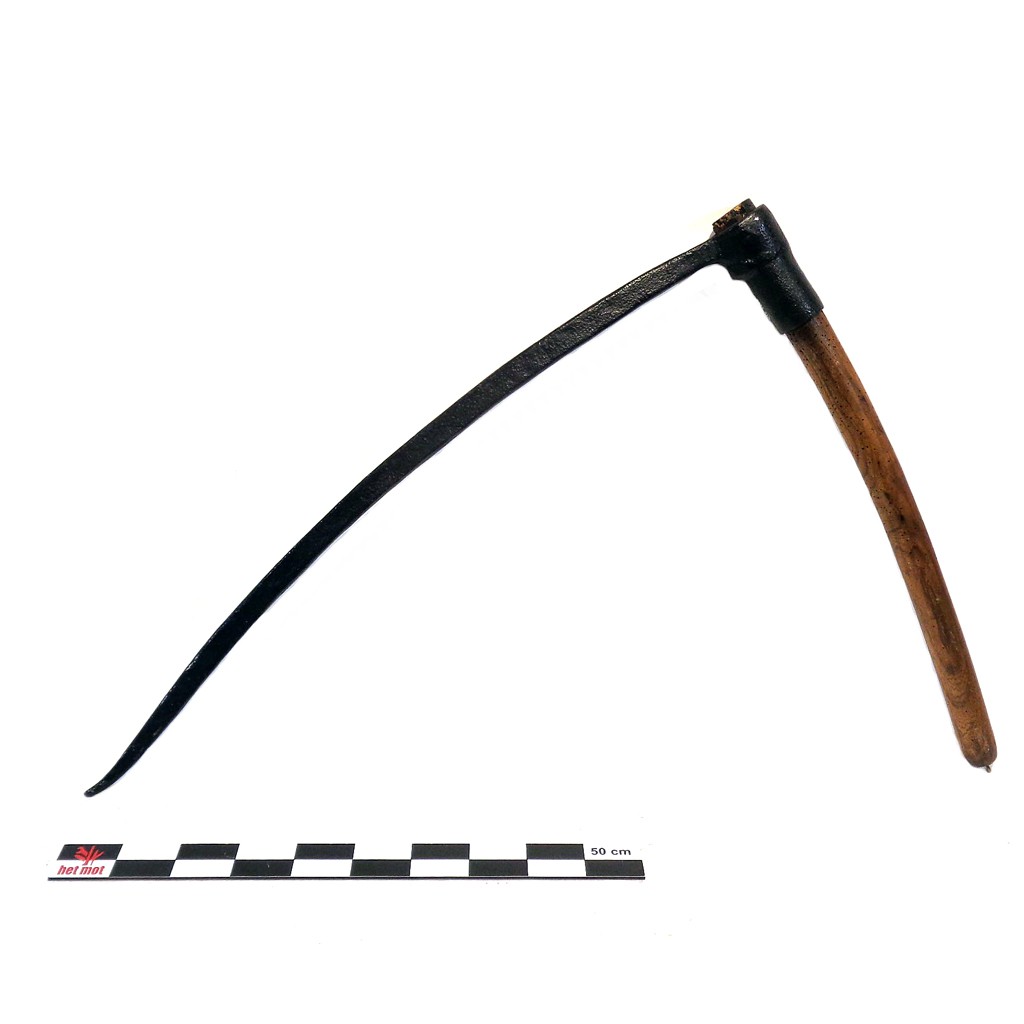
Ore pick
The ore pick (1) is a hand tool used by dockworkers when unloading a ship's
hold or moving bulk cargo such as ores. Compared to various picks, the
metal is remarkably long (approx. 60-95 cm) in relation to the wooden
handle (approx. 60-75 cm), which is almost at right angles connected in an
eye. The pick narrows to a point, which is hammered into the ore to break
it free for further scooping. [MOT] (1) The proper name in English is yet
unknown. The tool was certainly used by dockers in the port of Antwerp
(EECKELAERT: 417).
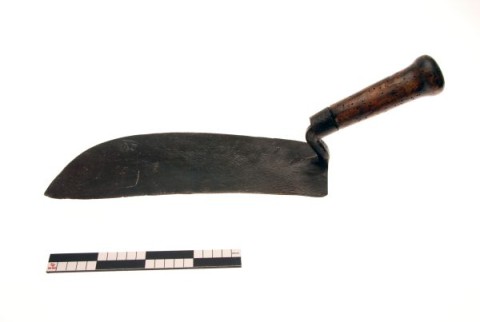
Osier chopping-knife
This text can only be consulted in Dutch
<https://www.mot.be/resource/Tool/osier-chopping-knife?lang=nl>
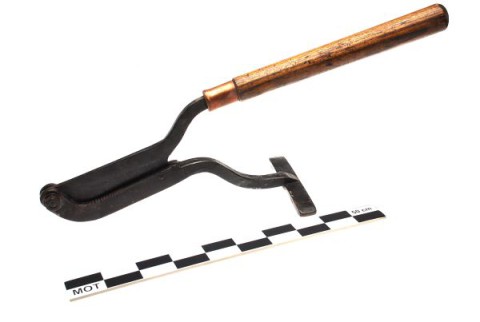
Osier foot shears
This text can only be consulted in Dutch
<https://www.mot.be/resource/Tool/1121?lang=nl>
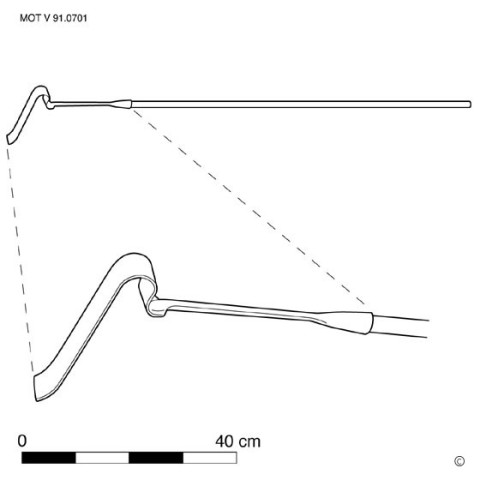
Oven-rake
This text can only be consulted in Dutch
<https://www.mot.be/resource/Tool/oven-rake?lang=nl>
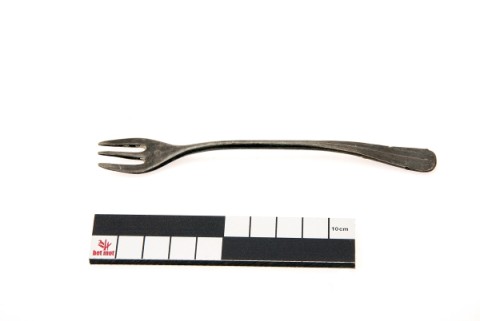
Oyster fork
Small (approx. 12-13 cm long) fork with three sharp, short (approx. 2-3 cm)
teeth with which one can remove oysters from their shells. The teeth are
straight or slightly bent inward; usually one tooth has a cut on the
outside to cut the oyster loose. The oyster fork can also be provided with
a knife at the other end. [MOT]
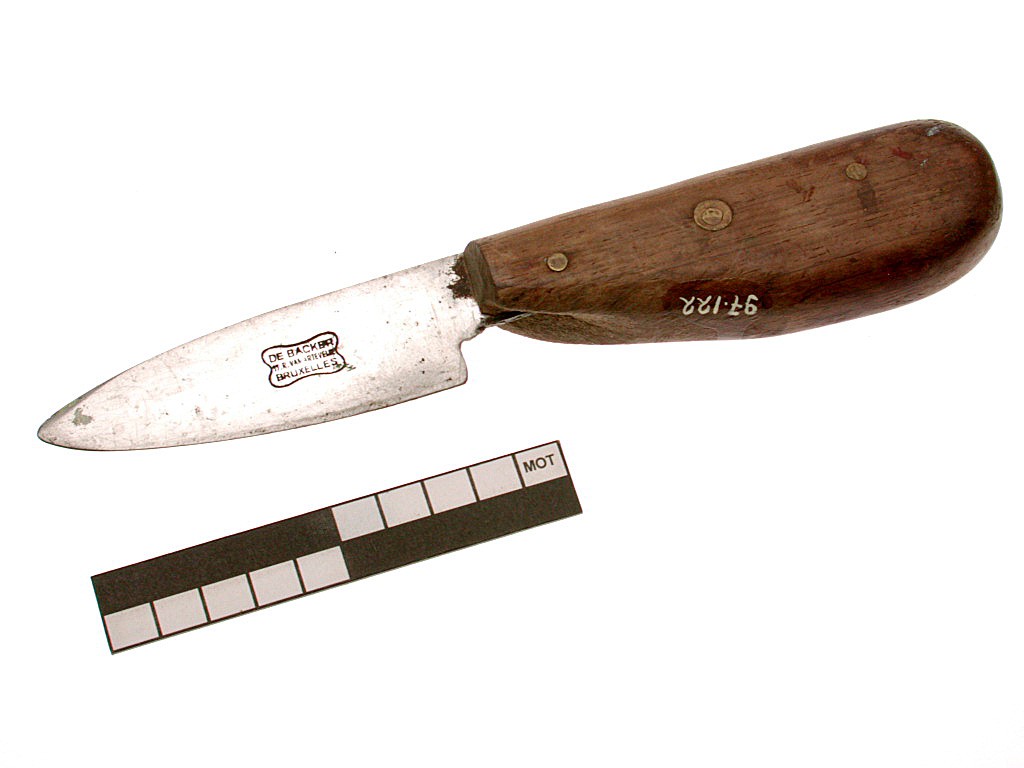
Oyster knife
You can find more technical information about the oyster knife on this page
in dutch. [MOT]
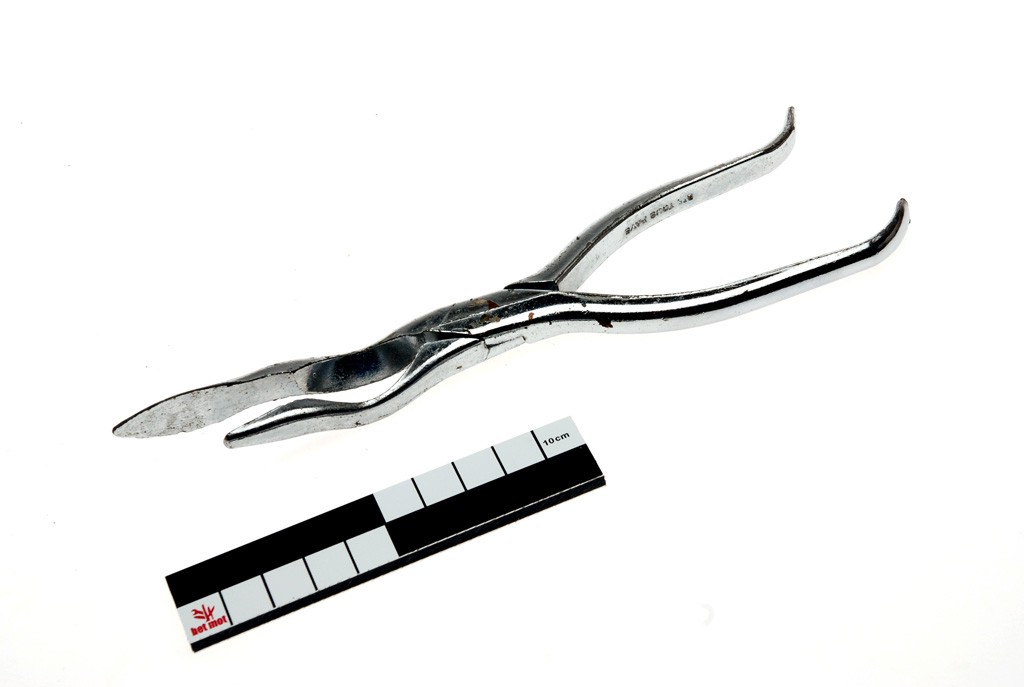
Oyster opening tongs
Oysters have strong sphincter muscles. To open live oysters, use an oyster
knife, an oyster opener or oyster tongs. The latter can take different
forms. One model consists of two-lever tongs of the first type. The mouth
is equipped with 2 hollow "blades" with which an opening is "broken" in the
edge of the shell. Then, the tip of the longer part is inserted into the
opening made. By wringing, the sphincter is cut. In another model, the
mouth opens when the arms are compressed. The blade of this oyster tong is
inserted into the oyster. The thumb is protected by a plate. The oyster is
opened with the jaws of the tongs. [MOT]
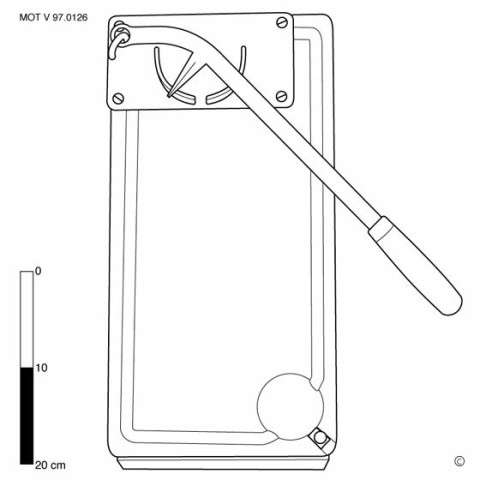
Oyster shucker
This text can only be consulted in Dutch
<https://www.mot.be/resource/Tool/oyster-shucker?lang=nl>
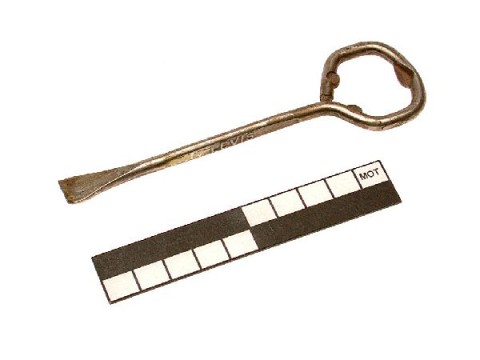
Paint can opener
The house painter and do-it-yourselfer use a pot opener to lift the lid of
the hermetically sealed paint cans to allow air to enter and open the can.
The paint pot opener is a flat metal rod (approx. 10-15 cm) with the end
(approx. 1 cm) folded back and thinned for easier access under the lid. The
rod then serves as a lever of the first kind. If the end is not folded
over, it will be in the shape of a flat screwdriver and / or hook. Slightly
shorter models are provided with a ring to put more pressure, sometimes
they are combined with a can pierce or a bottleopener. [MOT]
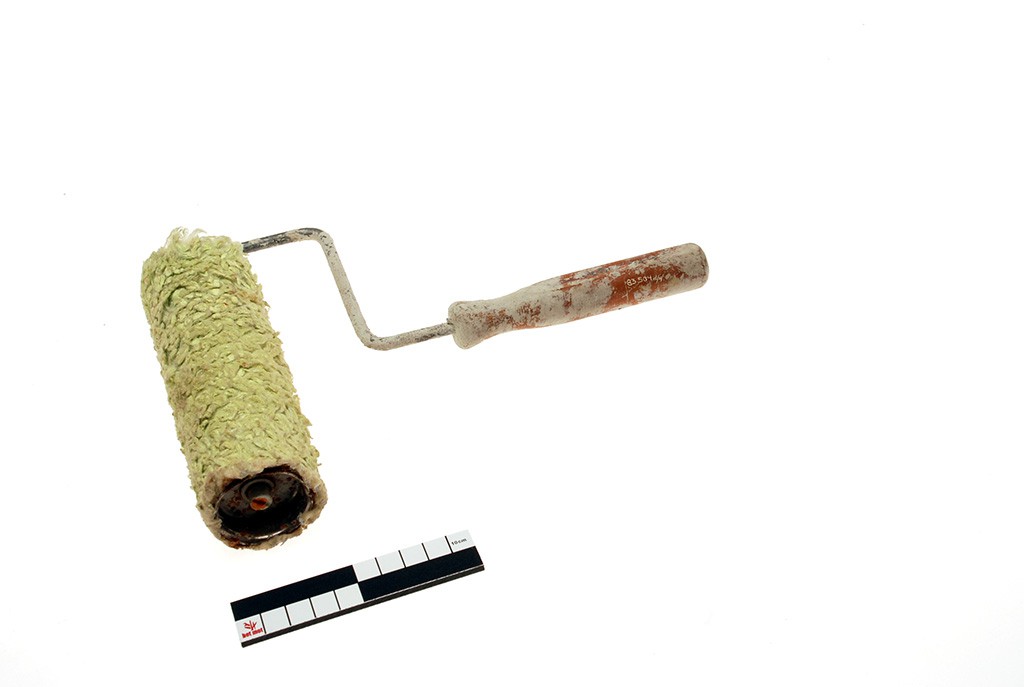
Paint roller
This text can only be consulted in Dutch
<https://www.mot.be/resource/Tool/paint-roller?lang=nl>
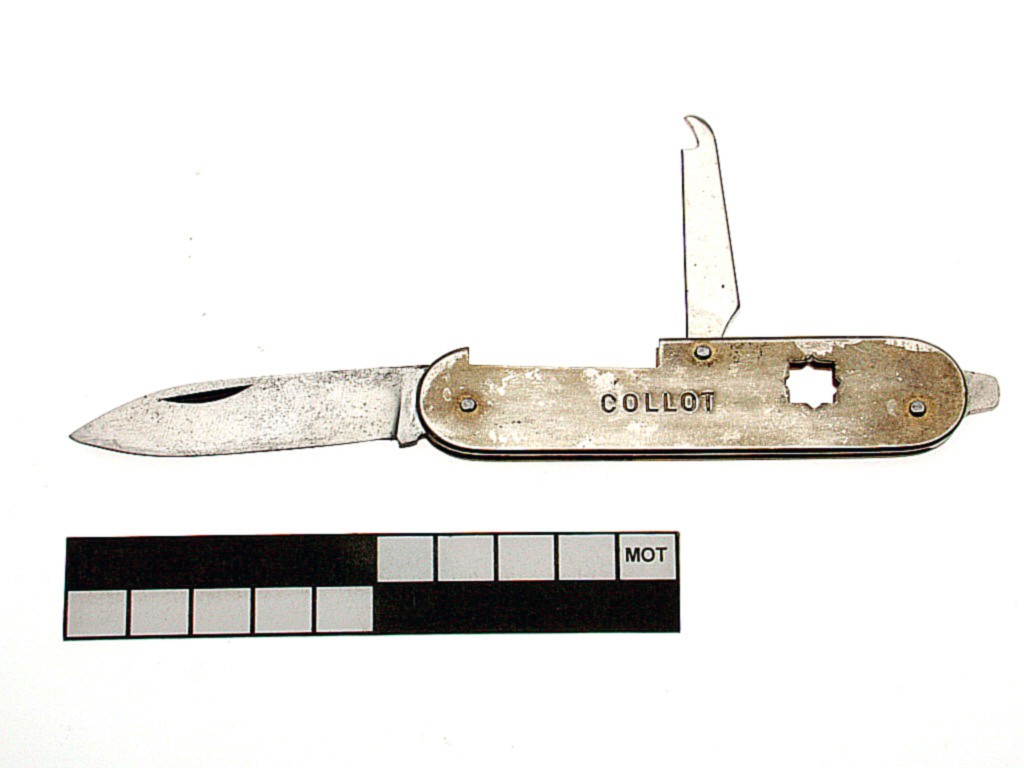
Painter's pocket knife
This text can only be consulted in Dutch
<https://www.mot.be/resource/Tool/painters-pocket-knife?lang=nl>
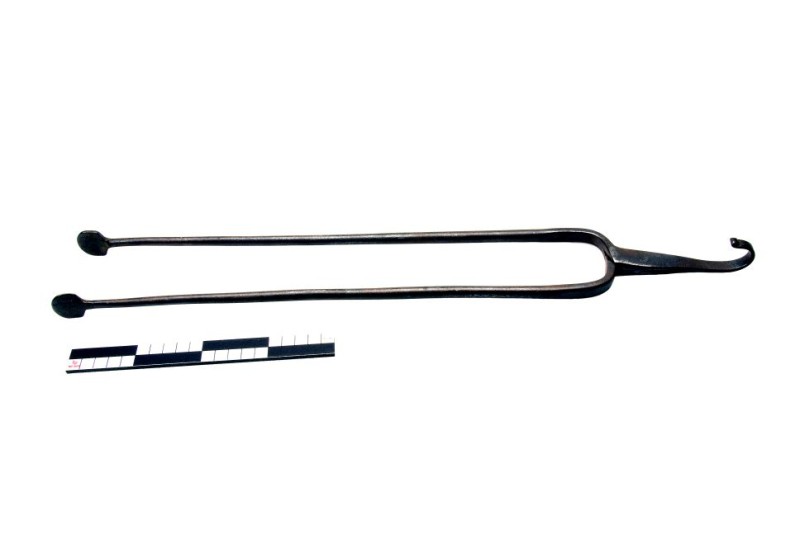
Pair of fire tongs
Fire tongs can be used to move burning pieces of wood. It is quite long, so
that the hands are kept at a sufficient distance from the fire and the
burning pieces of wood. The fire tongs are often part of a fireplace set,
which can also contain an ash shovel, a fork and a brush. The fire tongs
are very different from charcoal tongs, which are lighter and often
shorter. It is therefore only intended to take a coal from the fireplace
and light the pipe with it. See also the clinker tongs. [MOT]
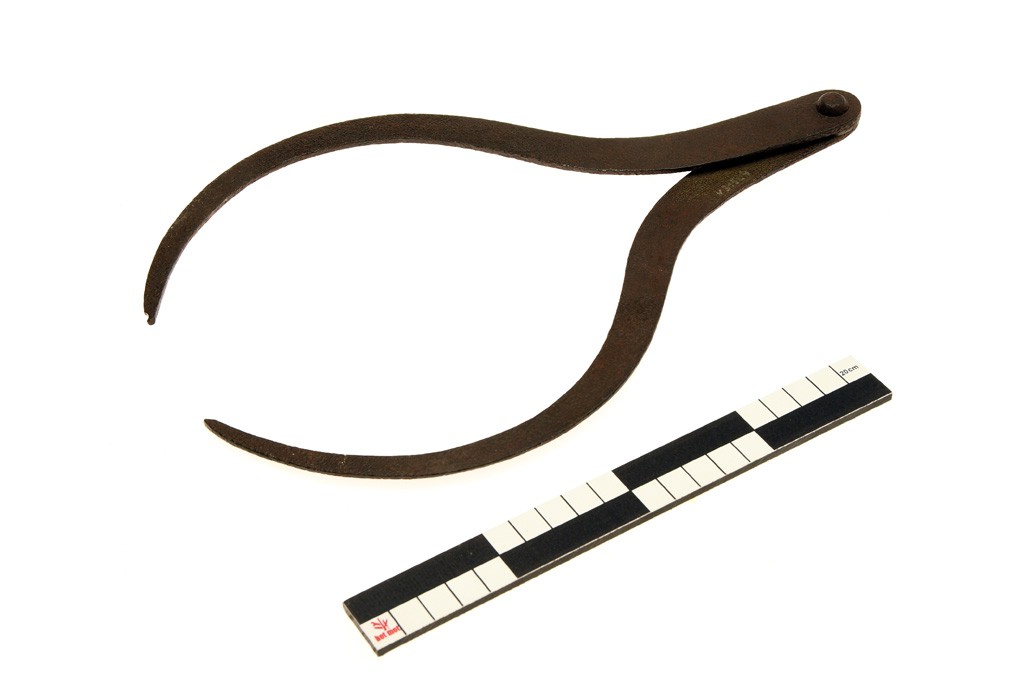
Pair of outside callipers
This text can only be consulted in Dutch
<https://www.mot.be/resource/Tool/pair-of-outside-callipers?lang=nl>
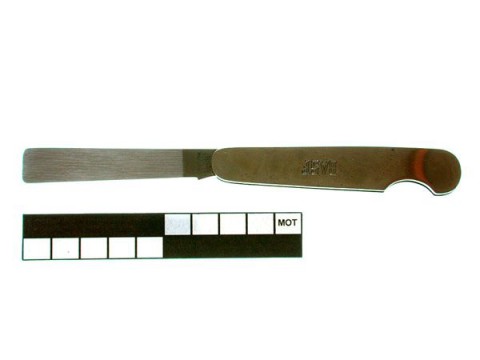
Palette knife
The palette knife is a spatula or trowel-shaped tool (approx. 15-20 cm
long) with a flexible blade along its entire length that the painter uses
to mix dyes on the palette and to apply paint to the canvas (1). The
spatula-shaped ones can be made of metal, wood or plastic and are also used
to scrape off wet paint with the side of the blade without damaging the
canvas. The trowel-shaped ones have a metal blade whose shape and size
(approx. 3-12 cm long; approx. 3-4 cm wide) vary greatly: it can be
triangular, diamond-shaped, oval or rectangular - with or without rounded
corners - attached to a straight handle. The latter are mainly used to
apply small dots or wide stripes of paint to the canvas. The palette knife
with narrow, rectangular blade is also available as a pocket knife. Then it
is a useful tool for testing colors. The house painter also uses a larger
spatula-shaped tempering knife, the blade of which is about 15-30 cm long,
to mix paint. [MOT] (1) With the advantage that new layers...
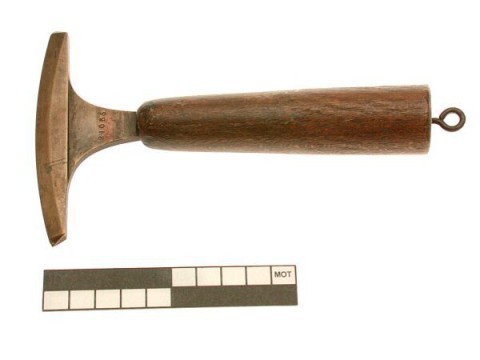
Pallet
Hand tool that the bookbinder uses to decorate and gild leather-bound
books. It has a T-shaped, often copper blade, the narrow (about a few mm)
end of which is slightly curved and provided with a fillet motif, fixed in
a wooden handle. After heating, the pallet is pressed on the (gilded)
leather to obtain a fillet pattern. See also the type holder. [MOT]
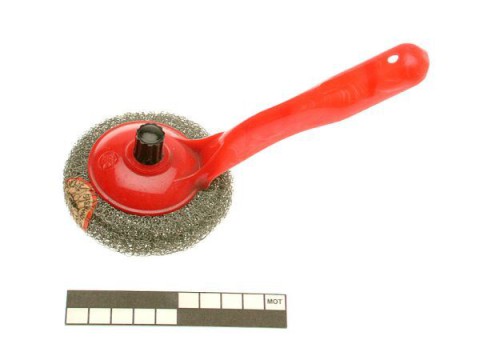
Pan scrubber
With a pan scrubber you can clean dirty pans or pots while washing. It
consists of a scouring pad made of galvanized iron mesh or steel wool,
which may or may not be attached to a plastic handle.See also the sink
brush for dishwashing. [MOT]
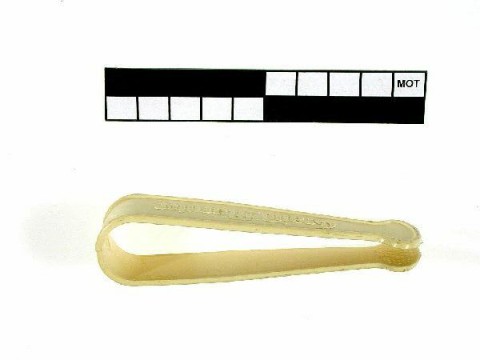
Pancake tongs
Rare plastic U-shaped pliers (approx. 10 cm long) that can be squeezed
shut. For example, a pancake can be grasped this way to be eaten. This tool
can be distinguished from the strawberry huller and print tongs of a
photographer. [MOT]
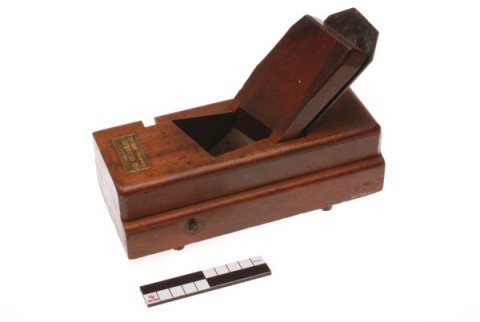
Panel plane
This text can only be consulted in Dutch
<https://www.mot.be/resource/Tool/panel-plane?lang=nl>
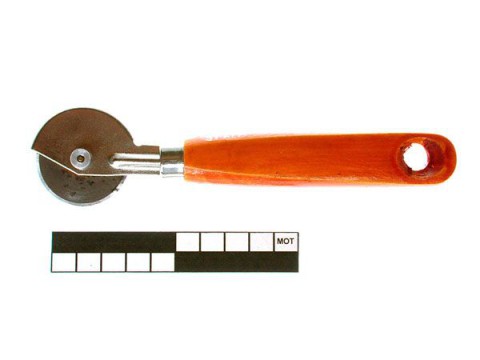
Paper hanger's casing knife
This text can only be consulted in Dutch
<https://www.mot.be/resource/Tool/paper-hangers-casing-knife?lang=nl>
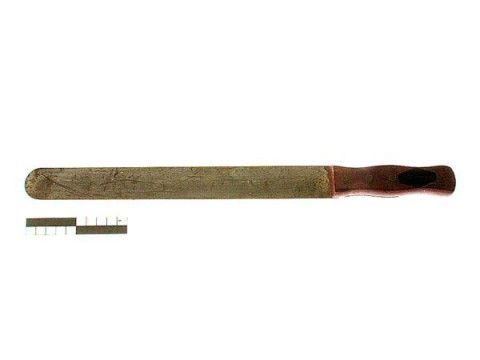
Paper hanger's knife
Knife with a long (approx. 30 cm), spatula-shaped blade with a rectangular
cut in section, attached to a straight handle. It is used to strip
wallpaper glued in along the edge of the pasting table from the selvedge.
For this purpose, a thin metal strip was applied to the long side of the
table. See also the wallpaper knife and the paper hanger's casing knife.
[MOT]
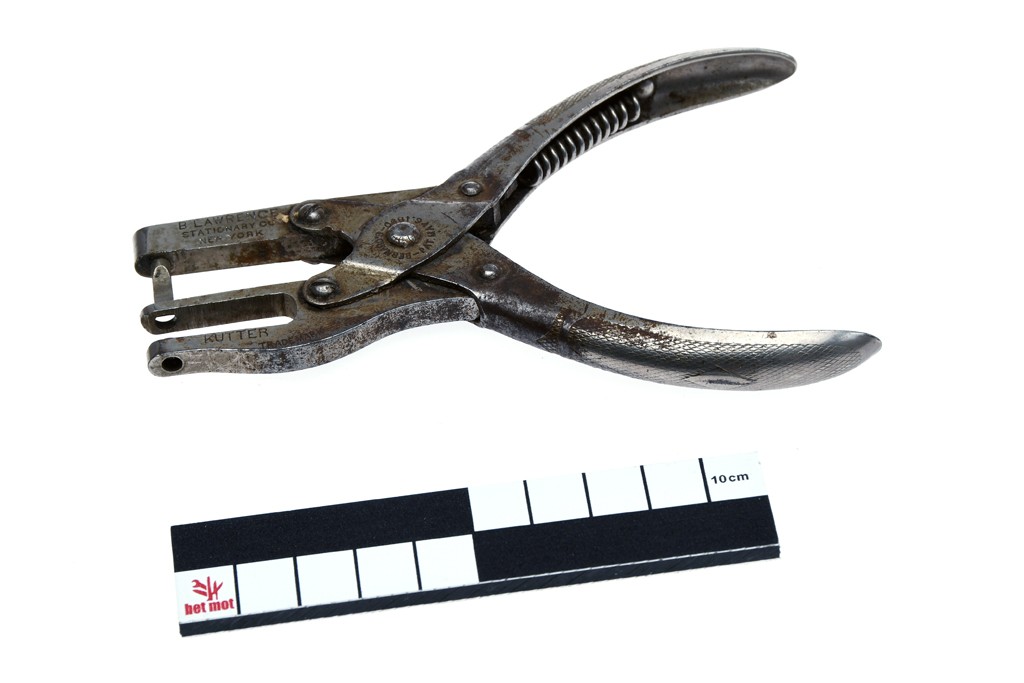
Paper punch pliers
This text can only be consulted in Dutch
<https://www.mot.be/resource/Tool/paper-punch-pliers?lang=nl>
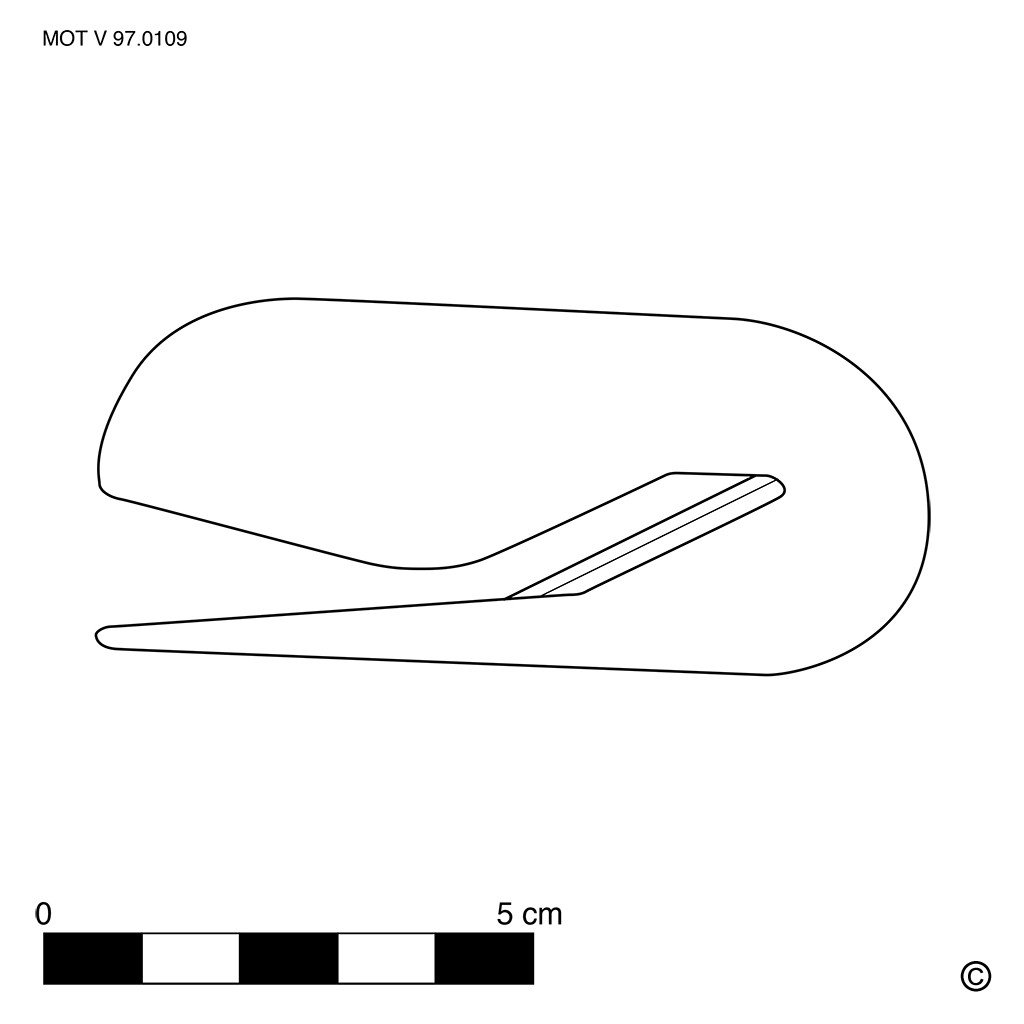
Paperknife
Metal, wooden, bone, ivory or plastic knife (approx. 20-25 cm long),
usually in one piece, with a flat and narrow (approx. 0.5-1 cm) blade that
tapers towards the end. The edge is not sharp and the point is relatively
blunt. With a paperknife you can easily cut open envelopes and books; it is
inserted respectively into the fold of the cover or between two uncut
leaves of a book and then cut open along the fold. Sometimes the letter
opener is equipped with a pocket knife at the other end. Another paperknife
model has a razor-sharp blade (approx. 3 cm) in a rectangular plastic
handle, which is no thicker than 4 mm. This type of paperknife is not to be
confused with the folder. [MOT]
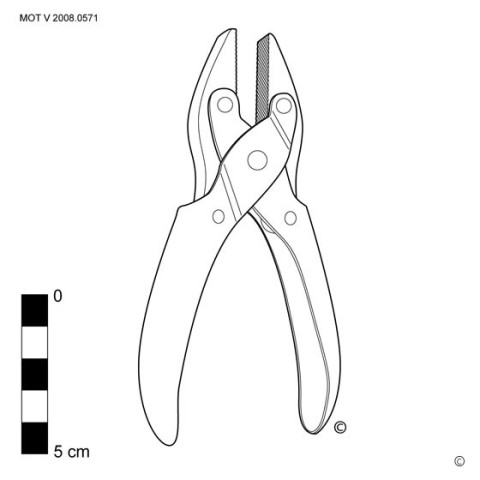
Parallel pliers
With parallel pliers you can clamp flat metal or metal wire without
damaging it. The jaws always remain parallel so that even with thick
material all the force is distributed over the entire jaw. The teeth are
flat on the material. Springs are fitted in the legs to open the pliers.
Some pliers are equipped with a wire cutter. [MOT]
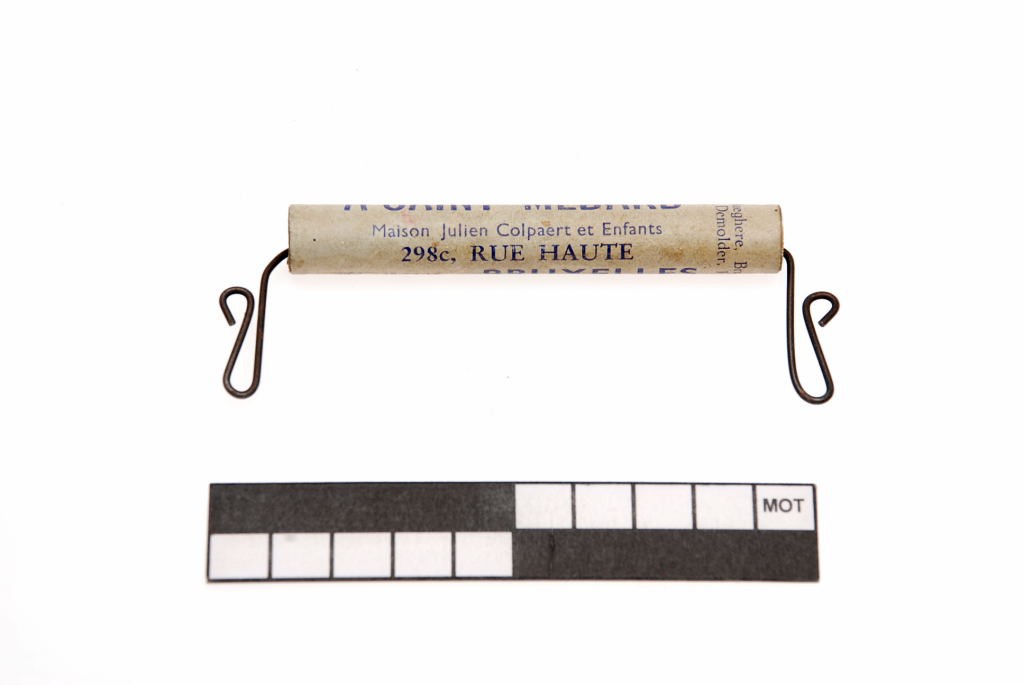
Parcel handle
This text can only be consulted in Dutch.
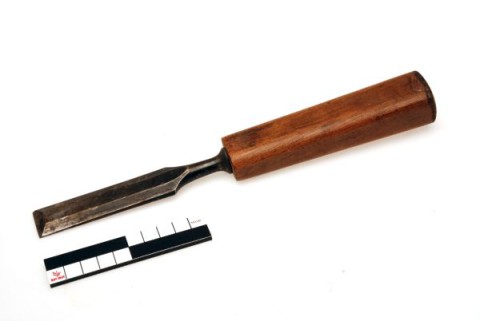
Paring chisel
Wide chisel with one bevel, sometimes without a neck. Since it does lighter
work than the firmer chisel, it is theoretically not beaten with the wooden
hammer, but pushed. It is also sharper than the firmer chisel. The Japanese
chisel (Japanese: tsuki nomi) is longer than the western one and is always
used with both hands. It is used for finishing mortise and tenon joints and
grooves. [MOT]
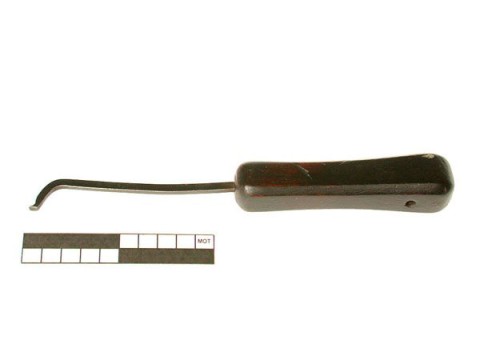
Paring chisel (marquetry worker)
Paring chisel used by the marquetry and violin maker to cut the groove into
which an inlay will be placed. It has a blade with a rectangular cross
section that is bent at the end, which is sharpened at right angles. [MOT]
